Use this nursing care plan and management guide to help care for patients with major depressive disorders. Learn about the nursing assessment, nursing interventions, goals and nursing diagnosis for major depression in this guide.
What is Major Depression?
Major depression (or major depressive disorder) is classified under mood disorders which are characterized by disturbances in the regulation of mood, behavior, and affect that go beyond the normal fluctuations that most people experience. Per the Diagnostic and Statistical Manual of Mental Disorders, 5th Edition (DSM-5), an individual must have five (5) of the following symptoms, of which one must be a depressed mood or anhedonia causing social or occupational impairment, to be diagnosed with major depressive disorder (MDD) (Bains & Abdijadid, 2022):
- Persistently low or depressed mood
- Anhedonia or decreased interest in pleasurable activities
- Feelings of guilt or worthlessness
- Lack of energy
- Poor concentration
- Appetite changes
- Psychomotor retardation or agitation
- Sleep disturbances
- Suicidal thoughts
The DSM-5 also classifies depressive disorders as:
- Disruptive mood dysregulation disorder
- Major depressive disorder
- Persistent depressive disorder (dysthymia)
- Premenstrual dysphoric disorder
- Depressive disorder due to another medical condition
Furthermore, depressive disorders may be further categorized by specifiers:
- Peripartum onset
- Seasonal pattern
- Melancholic features
- Mood-congruent or mood-incongruent psychotic features
- Anxious distress
- Catatonia
Major depressive disorder is a highly prevalent psychiatric disorder. It has a lifetime prevalence of about 5% to 17%, with the average being 12%. The prevalence rate is almost double in women than in men (Bains & Abdijadid, 2022). Non-Hispanic Asian adults were least likely to experience mild, moderate, or severe symptoms of depression compared with Hispanic, non-Hispanic white, and non-Hispanic black adults (Halverson & Bienenfeld, 2023).
According to the CDC, from 2016 to 2019, 2.7 million children aged 3 to 17 years were diagnosed with depression. The incidence of depression was 0.9% in preschool-aged children, 1.9% in school-aged children, and 4.7% in adolescents according to a study. In another study, more than 22% of female high school students and more than 11% of male high school students reported one current or lifetime episode of unipolar depression (Halverson & Bienenfeld, 2023).
Although rates of depression in women and men are highest in those aged 25 to 44 years, the incidence of clinically significant depressive symptoms increases with advanced age, especially when associated with medical illness or institutionalization (Halverson & Bienenfeld, 2023).
Major depressive disorder is a clinical diagnosis; it is mainly diagnosed by the clinical history given by the client and mental status examination. The clinical interview must include medical history, family history, social history, and substance abuse history along with symptomatology. A complete physical examination, including a neurological examination, should also be performed (Bains & Abdijadid, 2022).
You can learn more about major depression in our study guide here.
Nursing Care Plans and Management
Nursing care plans and management for clients with major depression include determining a degree of impairment, assessing the client’s coping abilities, assisting the client to deal with the current situation, increasing the client’s self-esteem, promoting the client’s safety, improving the client’s social support, and promoting health and wellness.
Nursing Problem Priorities
The following are the nursing priorities for patients with major depression:
- Assess suicide risk
- Monitor mood and behavior changes
- Administer prescribed antidepressant medication
- Facilitate regular psychotherapy sessions
- Provide education on depression management
Nursing Assessment
Assess for the following subjective and objective data:
- Persistent feelings of sadness, emptiness, or hopelessness
- Loss of interest or pleasure in activities once enjoyed (anhedonia)
- Significant changes in appetite or weight (either loss or gain)
- Insomnia or excessive sleepiness (hypersomnia)
- Fatigue or loss of energy
- Feelings of worthlessness or excessive guilt
- Difficulty concentrating or making decisions
- Restlessness or slowed movements
- Recurrent thoughts of death or suicide
- Social withdrawal or isolation
Nursing Diagnosis
Following a thorough assessment, a nursing diagnosis is formulated to specifically address the challenges associated with major depression based on the nurse’s clinical judgment and understanding of the patient’s unique health condition. While nursing diagnoses serve as a framework for organizing care, their usefulness may vary in different clinical situations. In real-life clinical settings, it is important to note that the use of specific nursing diagnostic labels may not be as prominent or commonly utilized as other components of the care plan. It is ultimately the nurse’s clinical expertise and judgment that shape the care plan to meet the unique needs of each patient, prioritizing their health concerns and priorities.
Nursing Goals
Goals and expected outcomes may include:
- The client will seek help when experiencing self-destructive impulses.
- The client will have a behavioral manifestation of absent depression.
- The client will identify at least two-three people he/she can seek out for support and emotional guidance when he/she is feeling self-destructive before discharge.
- The client will not inflict any harm to themself or others.
- The client will identify support and support groups with whom he/she is in contact within one month.
- The client will state that he/she wants to live.
- The client will start working on constructive plans for the future.
- The client will demonstrate compliance with any medication or treatment plan within the next two weeks.
- The client will identify feelings that lead to poor social interactions.
- The client will discuss two-three alternative ways to take when feeling the need to withdraw.
- The client will eventually voluntarily attend individual/group therapeutic meetings within a therapeutic milieu (community or hospital).
- The client will verbalize that he/she enjoys interacting with others in activities and one-on-one interactions to the extent they did before becoming depressed.
- The client will state and demonstrate progress in the resumption of sustaining relationships with friends and family members within one month.
- The client will feel connected with others to share thoughts, feelings, and beliefs.
- The client will feel connectedness with the inner self.
- The client will participate in spiritual rites and passages.
- The client will discuss with the nurse two things that gave his or her life meaning in the past within three days.
- The client will talk to a nurse or a spiritual leader about spiritual conflicts and concerns within three days.
- The client will keep a journal tracking thoughts and feelings for one week.
- The client will state that he/she feels a sense of forgiveness.
- The client will state that he/she wants to participate in former creative activities.
- The client will state that he/she gained comfort from previous spiritual practices.
- The client will demonstrate a zest for life and the ability to enjoy the present.
- The client will identify one or two strengths by the end of the day.
- The client will identify two unrealistic self-expectations and reformulate more realistic life goals with the nurse by the end of the day.
- The client will identify three judgemental terms (e.g., “I am lazy”) the client uses to describe themself and identify objective terms to replace them (e.g., ” I do not feel motivated to).
- The client will keep a daily load and identify on a scale of 1 to 10 (1 being the lowest, 10 being the highest) feelings of guilt, shame, and self-hate.
- The client will report decreased feelings of guilt, shame, and self-hate by using a scale of 1 to 10 (1 being the lowest, 10 being the highest).
- The client will demonstrate the ability to modify unrealistic self-expectations.
- The client will give an accurate and nonjudgmental account of four positive qualities as well as identify two areas he or she wishes to improve.
- The client will identify two goals he or she wants to achieve from treatment, with aid of nursing intervention, within one to two days.
- The client will discuss with the nurse two irrational thoughts about self and others by the end of the first day.
- The client will reframe three irrational thoughts with the nurse.
- The client will remember to keep appointments, attend activities, and attend to grooming with minimal reminders from others within one to three weeks.
- The client will identify negative thoughts and rationally counter them and/or reframe them in a positive manner within two weeks.
- The client will show improved mood as demonstrated by the Beck Depression Inventory.
- The client will give examples showing that short-term memory and concentration have improved to usual levels.
- The client will demonstrate an increased ability to make appropriate decisions when planning with the nurse.
- The client will groom and dress appropriately with help from nursing staff and/ or family.
- The client will regain a more normal elimination pattern with the aid of foods high in roughage, increased fluid intake, and exercise daily (also with the aid of medications).
- The client will sleep between four to six hours with the aid of nursing measures and/or medications.
- The client will gain one pound a week with encouragement from family, significant others, and/or staff if significant weight loss is noted.
- The client will demonstrate progress in the maintenance of adequate hygiene and be appropriately groomed and dressed (shave/makeup, clothes clean and neat).
- The client will experience normal elimination with the aid of diet, fluids, and exercise within three weeks.
- The client will sleep between six to eight hours per night within one month.
- The client will gradually return to weight consistent for height and age or baseline before the illness.
- The client will engage in self-care activities at his or her own pace.
- The client will demonstrate improvement in handling the stages of grief at his or her own pace.
- The client will verbalize a sense of improvement toward the resolution of hope and grief in the subsequent time.
- The client will express feelings and acceptance of life events over which he or she has no control.
- The client will demonstrate independent problem-solving techniques to take control over life and does not verbalize or demonstrate suicidality.
- The client and significant other will verbalize accurate information about at least two of the possible causes of depression, three to four of the signs and symptoms of depression, and the use of medications, psychotherapy, and electroconvulsive therapy as treatment.
Nursing Interventions and Actions
Therapeutic interventions and nursing actions for patients with major depression may include:
1. Promoting Safety and Preventing Self-Directed Violence
Preventing self-violence in patients with major depression involves implementing measures to ensure a secure a safe environment by removing potential means for self-harm and closely monitoring the patient’s whereabouts. While providing continuous emotional support, fostering open communication, and actively listening to patients’ concerns can help alleviate feelings of hopelessness and provide a sense of validation and understanding, emphasizing the importance of seeking professional help and reinforcing that recovery is possible.
Identify the level of suicide precautions needed. If there is a high risk, and does hospitalization require it? Or if there is a low risk, will the client be safe to go home with supervision from a family member or a friend?
A client with a high risk will require constant supervision and a safe environment. Assess if the client has admitted previous suicide attempts, abuse any substances, has no peers/friends, and has any suicide plans. When the client has contemplated or attempted suicide, the burden is on the healthcare professional to directly explore the situation with the client in as much detail as possible to determine the current presence of suicidal ideation as well as accessible means and plans (Halverson & Bienenfeld, 2023).
Check for the availability of the required supply of medications needed.
Normally, a suicidal client’s medical supply should be limited to 3 to 5 days. Clients who attempt to commit suicide with prescribed medications represent one of the greatest clinical challenges. The dilemma involves balancing the fact that psychotropic drugs alleviate mental illness symptoms with the reality that some clients will use the very same medications to commit suicide. A study points out the need to pay attention to the number of stockpiled medications available to potentially self-destructive clients (Halverson & Bienenfeld, 2023).
Assess the client presenting with somatic symptoms carefully for an indication of depressive disorder.
Clients with major depressive disorder may not initially present with a complaint of low mood, anhedonia, or other typical symptoms. In the primary care setting, where are many of these clients first seek treatment, the presenting complaints often can be somatic, such as fatigue, headache, abdominal distress, or changes in weight. Clients may complain more of irritability or difficulty concentrating than of sadness or low mood (Halverson & Bienenfeld, 2023).
Identify factors that predispose the client to depression.
A thorough family history is important because depression can be familial. Familial, societal, and environmental factors appear to play significant roles in the course of depressive illness in children and youths, even in preschool children. A study described anaclitic depression or marasmus in infants being raised in an orphanage and in hospitalized children whose parents were not allowed to visit (Halverson & Bienenfeld, 2023).
Perform a mental status examination.
The diagnosis of major depressive disorder is based on the history and the mental status examination. Children with major depressive disorder may present with initially misleading symptoms such as irritability, a decline in school performance, or social withdrawal. Older adults may present with confusion or a general decline in functioning; they also experience cognitive symptoms and fewer complaints of sad or dysphoric mood (Halverson & Bienenfeld, 2023).
Assess the client’s mental status regarding the potential for committing suicide.
Another mental status review is designed to focus on evaluating an individual’s potential for committing suicide. One specific concern is a flat affect by the client when describing their thoughts and plans of suicide and self-destructive behavior. Three types of thought changes represent the areas for major focus and concern: command hallucinations telling the client to kill themselves, delusions about the benefits of suicide, and an obsession with taking their own lives (Soreff & Xiong, 2022).
Encourage clients to express feelings (anger, sadness, guilt) and come up with alternative ways to handle feelings of anger and frustration.
Clients can learn alternative ways of dealing with overwhelming emotions and gain a sense of control over his/her life. In the earliest stages of psychiatric hospitalization, with the most severely ill clients whose behaviors make talk-based therapy impractical or impossible, sensitive relationship-building has to come first. At its core, relationship-building is about language. It calls for identifying a specific communicative channel to enable initial interpersonal contact (Birnbaum, 2017).
Contact the family, and arrange for crisis counseling.
Clients need a network of resources to help diminish personal feelings of helplessness, worthlessness, and isolation. Engaging the family can be a critical component of a treatment plan, especially for pediatric and late-onset depression. Family members are helpful informants, can ensure medication adherence, and can encourage clients to change behaviors that perpetuate depression (Halverson & Bienenfeld, 2023).
If hospitalized, follow unit protocols.
There are different measures for suicidal clients in the hospital, clinic, and community. If suicidality is present, hospitalization with the client’s consent or via emergency commitment should be undertaken unless there are clear-cut means to ensure the client’s safety while outpatient treatment is begun (Halverson & Bienenfeld, 2023).
Assist in establishing a safety plan.
The Joint Commission recommended the development of a collaborative safety plan as an alternative to no-suicide contracts. Safety planning has been found to be acceptable to and more feasible by both suicidal clients and staff. Clients report it helps maintain their safety. Crisis response planning, a form of safety planning, resulted in fewer suicide attempts, lower suicidal ideation, and greater treatment engagement than no-suicide contracts, according to a randomized clinical trial (Stanley et al., 2018).
Activate links to self-help groups.
Responding to calls for greater efforts to reduce youth suicide, the Garrett Lee Smith Memorial Act to date has provided funding for 68 state, territory, and tribal community grants, and 74 college campus grants for suicide prevention efforts. Efforts at universities, for example, include creating comprehensive networks of individuals who are trained to recognize signs, symptoms, and communications of suicide and responding by connecting students to needed resources (Soreff & Xiong, 2022).
Perform post-discharge follow-up interventions.
These interventions, particularly those that involve in-person and telephone contact, are effective for clients diagnosed with major depressive disorder. One ED study found a 30% lower suicide attempt rate with an intervention consisting of screening, providing basic written material on safety planning, and several calls to suicidal clients and their significant others (Stanley et al., 2018).
Prepare the client for electroconvulsive therapy (ECT) as indicated.
ECT is a highly effective treatment for depression, especially when the client has a high risk of suicide. The onset of action may be more rapid than that of drug treatments, with the benefit often seen within one week of commencing treatment. However, this modality still poses numerous risks, including those associated with general anesthesia, postictal confusion, and, more rarely, short-term memory difficulties (Halverson & Bienenfeld, 2023).
Provide close monitoring for pediatric clients taking antidepressants.
In October 2003, the FDA issued a public health advisory regarding reports of suicidality in pediatric clients being treated with antidepressant medications. However, these agents are not contraindicated because access was important for those who could benefit from it. Therefore, the FDA recommended that pediatric clients taking antidepressants should be provided with close monitoring. Close monitoring includes at least weekly face-to-face contact with clients or their family members or caregivers during the first four weeks of treatment; visits every other week for the next four weeks; visits at 12 weeks; and then visits as clinically indicated beyond 12 weeks (Halverson & Bienenfeld, 2023).
Remove anything that the client may use to hurt or kill themselves.
Remove sharp or potentially dangerous objects. Ask the client for any weapon, such as knives or pills, and secure them away from the client. A study of the association between the provision of mental health services and suicide rates found that removing ligature points (places where things like ropes could be attached) was associated with significant reductions in the overall psychiatric inpatient suicide rate and in the rate of inpatient suicide by hanging (Soreff & Xiong, 2022).
Administer antidepressants, as prescribed.
See Pharmacologic Management
Assess individual signs of hopelessness.
These aids focus attention on aspects of individual needs. These signs may include social withdrawal, decreased physical activity, and comments made by clients that indicate despair and hopelessness. A dysphoric mood state may be expressed by the client as sadness, heaviness, numbness, or sometimes irritability and mood swings. Their thinking is often negative, frequently with feelings of worthlessness, hopelessness, or helplessness (Halverson & Bienenfeld, 2023).
Assess destructive behaviors used to handle feelings such as withdrawal, avoidance, and substance abuse.
The client may have tried to overcome feelings of hopelessness with harmful and ineffective behaviors. Acknowledging these behaviors provides an opportunity for change. While most depressed clients would use avoidance coping strategies and try to comprehend what was happening to them, it would make them feel emotionally unstable (Idris et al., 2023).
Conduct a suicide assessment to identify the level of suicide risk.
High risk will require hospitalization. When a client has contemplated or attempted suicide, the burden is on the healthcare staff to directly explore the situation with the client in as much detail as possible to determine the current presence of suicidal ideation as well as accessible means and plans (Halverson & Bienenfeld, 2023).
Determine the degree of life mastery and locus control.
Life mastery helps determine success in adjusting to the health condition, the locus of control relates to the ability to manage outcomes related to the mental health process. An external locus of control would benefit from positive affirmation.
Allow the client to express feelings and perceptions
The process of recognizing feelings that underlie and drive behaviors allows clients to start taking control of their lives. Expressing their feelings can help the client become aware of their thoughts, feelings, and behaviors. This can be an important step in the healing process, as clients with depression may have a tendency to suppress or ignore their emotions.
Express hope to the client with realistic comments about the client’s strengths and resources.
Clients may feel hopeless, but it is helpful to hear positive expressions from others. Having hope lays a solid foundation on which to achieve a goal associated with positive thinking in themselves, family, and community, as well as service providers (Idris et al., 2023).
Assist the client in determining aspects of life that are under his or her control.
An individual’s emotional state may interfere with problem-solving. Support may be required to identify areas that are under his or her control and to have clarity about options for taking control. The idea of empowerment emphasizes the capacity for self-care and planning daily activities. Empowerment refers to the process through which a person reclaims control over his or her life, accepts personal responsibility, and makes investments in or incorporates positive factors into their life (Idris et al., 2023).
Allow the client to assume responsibility for self-care, such as setting realistic goals, scheduling activities, and making independent decisions.
Helping clients set realistic goals increases feelings of control and provides satisfaction when goals are achieved, thereby decreasing feelings of hopelessness. The creation of an identity to find strength and capability in reaching personal goals are intimately linked to recovery from mental illness. Respondents in a study found that their sense of identity and self-worth was strengthened by their return to control over their lives, the assumptions about responsibility, the perception that they were contributing members of society, the restoration of normalcy, and the restoration of employment (Idris et al., 2023).
Aid the client to determine aspects of life events that are not within his or her ability to control. Discuss feelings related to this lack of control.
The client needs to recognize and resolve feelings related to the inability to control certain life situations before acceptance can be achieved and hopefulness becomes possible. Although at first, clients in a study did not believe in their abilities, they managed to prove that they are capable of performing given tasks. Even though it might appear as a small success to most people, for them, it was a big and worthwhile success, especially after recovering from MDD (Idris et al., 2023).
Encourage the client to examine spiritual supports that may provide hope.
Some people find that spiritual beliefs and practices are a great source of hope. The process by which people regain a more meaningful life, comprehend the mental illness and the challenges that surround it, make the transition to spirituality to form a framework of understanding and explanation of their lives and experiences, seek an active role in society, and strive for the well-being of life is what is meant by the concept of meaning (Idris et al., 2023).
Educate the client about crisis intervention services such as suicide hotlines and other resources.
It is essential to give clients resources for safety and support when feelings and thoughts about suicide become hard to manage. It is critical for clients to appreciate that suicidal behavior reflects mental illness. Education and an opportunity to discuss their feelings can help. Helpful websites include the American Association of Suicidology, NIMH Suicide Prevention, NIMH Warning Signs of Suicide, and US CDC Suicide Prevention (Soreff & Xiong, 2022).
Administer antidepressants as indicated.
Suicidal thinking is a symptom of depression that is managed through proper medication. SSRIs are the initial antidepressants of choice for uncomplicated depression because of their minimal anticholinergic effects. They have the advantage of the ease of dosing and low toxicity in overdose. Because the adverse-effect profile of SSRIs is less prominent than other agents, improved compliance is promoted (Soreff & Xiong, 2022).
Identify community resources, such as the adult day enrichment program.
Participation in structured activities can reduce the sense of isolation and may enhance feelings of self-worth. These resources also provide respite to caregivers. Structured care in which nonmedical specialists augment primary care may offer an improved model. The use of an allied health professional supervised by a psychiatrist integrated into the primary care treatment of depression has been shown to double rates of adherence to antidepressants and significantly improve response to depression treatment (Halverson & Bienenfeld, 2023).
Discuss with the client their expectations for themselves, their family, the community, and healthcare workers.
Hope can be seen as the beginning of the healing process, and it provides a crucial foundation to accomplish a goal. When discussing issues related to mental health problems, encourage the client to express their expectations for self, family, community, and the healthcare team (Idris et al., 2023).
2. Promoting Therapeutic Relationship and Enhancing Support Network
The support network of patients with major depression has a significant impact on their recovery. Having a support system composed of family, friends, nurses, and other groups such as religious groups who provide understanding, empathy, and encouragement can help individuals feel validated, less alone, and more motivated to seek treatment. This network can offer emotional and spiritual support, practical assistance, and a safe space for open communication, enhancing the well-being and resilience of the individual throughout their journey with major depression.
Assess the client using depression screening tests.
Depression screening tests can be valuable, with the most widely used one being the Patient Health Questionnaire-9 (PHQ-9). However, it is important to understand that the results obtained from the use of any depression screening or rating scales do not diagnose depression and may be imperfect in any population, especially in older adults. The simplest screening test is a single question: Are you depressed? The PHQ-9 is a 9-item depression scale; each item is scored 0 to 3, providing a 0 to 27 severity score.
Review family patterns of relating and social behaviors.
Social interaction is primarily learned within the family of origin. When inadequate patterns are identified, actions for change can be instituted. Cultural influences on the presentation of depression can be significant. Culturally distinctive experiences should be distinguished from actual hallucinations or delusions that may be part of a major depressive episode with psychotic features (Halverson & Bienenfeld, 2023).
Initially, provide activities that require minimal concentration (e.g., drawing, playing simple board games).
Depressed people lack concentration and memory. Activities that have no “right or wrong” or “winner or loser” minimize opportunities for the client to put himself/herself down. Creative activities such as painting, drawing, writing, or music can help the lenient express their feelings and cope with their emotions. Self-care activities such as taking a relaxing bath or reading a book encourage the client to address their physical and emotional needs.
Involve the client in gross motor activities that call for very little concentration (e.g., walking).
Such activities will aid in relieving tensions and might help in elevating the mood. Regular exercise has been shown to be effective in reducing symptoms of depression. Encouraging the client to engage in physical activity, such as walking, running, swimming, or yoga may help improve their mood and increase their energy levels.
When the client is in the most depressed state, involve the client in one-to-one activity.
This maximizes the potential for interactions while minimizing anxiety levels. It has been argued that depressive symptoms are accompanied by a change in social skills and motivation to socialize. Individuals with more depressive symptoms may experience fewer social interactions because they may elicit rejection from others and they are likely to receive less reinforcement from the social environments, which contributes to a feeling of discomfort in social interactions and decreased social participation (Elmer & Stadtfeld, 2020).
Eventually involve the client in group activities (e.g., group discussions, art therapy, dance therapy).
Socialization minimizes feelings of isolation. Genuine regard for others can increase feelings of self-worth. A study found that the tendency of depressed individuals to interact in pairs instead of groups could additionally contribute to the interaction partner’s social isolation, as they are both more likely to become dyadically isolated and interact less with other individuals in a group setting (Elmer & Stadtfeld, 2020).
Eventually maximize the client’s contacts with others (first one other, then two others, etc.).
Contact with others distracts the client from self-preoccupation. It is important to consider that the effects between depression and social ties can go in both directions. Social ties can affect an individual’s levels of depressive symptoms and depressive symptoms can affect how individuals form and maintain social ties (Elmer & Stadtfeld, 2020).
Refer the client and family to self-help groups in the community.
The client and the family can gain tremendous support and insight from people sharing their experiences. Self-help groups can be perceived as a mobilization of support, interpersonal exchange as well as a platform for providing informal resources. They are described as creating and strengthening interactions between members of a community with similar concerns. Some evidence found that self-help groups improved social functioning, increased empowerment, and altered feelings as well as connection to oneself, and positive changes in mental health (Siller et al., 2017).
Prepare the client for cognitive behavioral therapy (CBT).
CBT is directed and time-limited, usually involving between 10 to 20 treatments. Cognitive therapy (CT) is the most widely practiced version of CBT for depression. It is based on the premise that clients who are depressed exhibit the “cognitive triad” of depression, which includes a negative view of themselves, the world, and the future. CBT for depression typically includes behavioral strategies, as well as cognitive restructuring for the purpose of changing negative automatic thoughts and addressing maladaptive strategies (Halverson & Bienenfeld, 2023).
Encourage the client to express feelings and perceptions of problems.
This helps identify and clarify reasons for difficulties in interacting with others, such as feeling unloved or unlovable. Depression can be an isolating experience, and people with depression often feel like they are alone in their struggle. Sharing their feelings with others can help depressed clients feel less isolated and more connected to the people around them.
Discuss negative self-concepts and self-talk.
This may be impeding positive social interactions. Behavioral activation emphasizes the role of positive and negative reinforcement in depression, suggesting that individuals with depression have deficient response-contingent positive reinforcement and engage in problematic avoidance behaviors (Halverson & Bienenfeld, 2023).
Ensure that the client has a solid support system once discharged.
The kind of support offered by one’s network also appears to be important for mental health. Social support refers to the functional content of social relationships, which is the extent to which one can access assistance and resources afforded by people in their networks. Social support is a multi-dimensional construct, which includes emotional forms of support, such as those derived from intimate, confiding relationships, but also instrumental support, which confers more pragmatic and practical assistance such as providing advice (Werner-Seidler et al., 2017).
Assess what spiritual practices have offered comfort and meaning to the client’s life when not ill.
This evaluates neglected areas in the person’s life that, if reactivated, might add comfort and meaning during a painful depression. Depression is often selected as a phenomenon of interest in relation to religiousness/spirituality because it is a common mental disorder and is often associated with a loss of hope and meaning (Braam & Koenig, 2019).
Assess whether the client is experiencing spiritual struggles or difficulties.
Spiritual struggles may overlap with MDD and other mental health conditions in many cases. Building on this work, the Religious and Spiritual Struggles Scale (RSSS) was developed to provide a more granular approach to gauging spiritual struggles that might hold greater utility for clinical practice and research. The RSSS captures six prominent ways in which clients may struggle with spiritual concerns- both religious and non-religious in nature- during times of heightened emotional vulnerability (Divine, Demonic, Moral, Ultimate Meaning, Interpersonal, and Doubting) (Currier et al., 2019).
Encourage the client to write a journal expressing thoughts and reflections daily.
This will help in identifying important personal issues and one’s thoughts and feelings surrounding spiritual issues. Writing a journal is a good way to explore deeper meanings in life. Expressive writing is a highly time-efficient, low-cost intervention because a therapist is usually not directly involved. Additionally, writing can be offered in combination with traditional therapy as a written reflection of therapy sessions at home. The written essays offer rich information to track mechanisms of therapeutic change (Reinhold et al., 2018).
If the client is unable to write, provide a tape recorder.
Often speaking aloud helps a person clarify thinking and explore issues. This also helps the client become more aware of their thoughts, feelings, and behaviors, which is an important step in the healing process, as clients with depression may have a tendency to suppress or ignore their emotions. Speaking out loud also helps the client feel connected to others, whether it is their therapist or a higher power.
Discuss with the client what has given comfort and meaning to the person in the past.
When depressed, clients usually are having a hard time searching for meaning in life and reasons to go on when feeling hopeless and despondent. Researchers concluded from their extensive review of the literature on religiousness/spirituality and depression that by its ability to neutralize life stress, religion might help both to prevent the onset of depression and if depression develops, shorten the time it takes to resolve (Braam & Koenig, 2019).
Suggest that the spiritual leader affiliated with the facility contact the client.
Spiritual leaders are familiar with dealing with spiritual distress and can offer comfort to the client. In a study, evidence was provided that religious interventions such as listening to religious recitals combined with a religious leader’s sermon approach could probably help reduce depressive symptoms as well as improve the quality of life among older adults (Pramesona & Taneepanichskul, 2018).
Provide information on referrals, when needed, for religious or spiritual information (e.g., readings, programs, tapes, and community resources).
When hospitalized, spiritual tapes and readings can be useful; when the client is in the community, the client might express other needs. Previous studies that support listening to a preacher’s sermon revealed the potential roles of religious leaders in influencing certain faith community members on health education and promotion programs, eventually resulting in positive health outcomes.
Listen to the client’s reports and expressions of anger or concern.
This may reveal conflicting thoughts and beliefs, for example, that their situation is a punishment for wrongdoing or that death is more desirable or feared than their current situation. To family members and friends, the difficulties in the mental health of a loved one cause great stress and temporarily impairs concentration, decision-making, and work performance.
Explore ways that spirituality or religious practices, such as music, prayer, meditation, and rituals have affected the client’s life.
This allows the client to explore spiritual needs and decide what fits their own view and provides support for dealing with the current situation. Recent sociologic surveys in the Us indicate high rates of affiliation with religious groups, monthly religious services attendance, weekly engagement in prayer or other private spiritual practices, and belief in the existence of God or a Higher Power. In such cases, spirituality may promote healthy lifestyles, social connectedness, attachment security with God or a Higher Power, identity formation, as well as healthy brain development among high-risk groups (Currier et al., 2019).
Use therapeutic communication skills of gentle stillness, reflection, conveying respect through tone of voice and body language, and active listening.
This encourages the client and family members to identify and express their concerns, hopes, fears, and expectations openly and honestly in a caring milieu. By using open-ended questions and reflective listening techniques, nurses can encourage clients to reflect on their experiences and emotions. This can help the client gain insight into their own thought processes and emotional reactions and facilitate a deeper understanding of their spiritual struggles.
Review coping skills used and their effectiveness in the current situation.
This helps the client and significant others remember and call upon strengths that have been helpful in other situations. This may also free the client to be “more” creative, loving, and into the experience of well-being. Religious coping emphasizes how people rely on religion in a crisis state. Positive religious coping indicates an expression of a sense of spirituality, a secure relationship with God, a belief that there is meaning to be found in life, and a sense of spiritual connectedness with others (De Berardis et al., 2020).
3. Promoting Activities of Daily Living and Self-Care
Patients with major depression may experience cognitive difficulties characterized by negative thought patterns, self-critical thinking, and a distorted perception of themselves and their surroundings. These cognitive distortions can contribute to a reduced ability to engage in self-care activities, as individuals may struggle with low motivation, feelings of worthlessness, and a lack of energy or interest in taking care of their physical and emotional well-being.
Determine the client’s previous level of cognitive functioning (from the client, family, and past medical records).
Establishing baseline data allows for the evaluation of the client’s progress. Cognitive deficits have been related to difficulties in maintaining job performance which can demand the ability to make decisions or sustain attention. Moreover, difficulties with social functioning are also linked to cognitive dysfunction in depression (Ahern & Semkovska, 2017).
Use measures to assess cognitive functioning.
A variety of measures were reported in routine clinical use for assessing cognitive function. The most commonly used measures include the Mini-mental State Exam, the Clock Drawing Test, and the Wechsler Memory Scale, none of which have been confirmed to be appropriate for detecting dysfunction in clients with mood disorders. It is likely that the most common practice is to ask clients about their cognitive symptoms (MacQueen & Memedovich, 2016).
Assess the client’s cognition using measures that reflect real-world function.
Recent interest is in extending the assessment of cognition beyond the laboratory or clinical setting to understand the ways in which cognitive changes impact real-world function. A study used the Behavior Rating Inventory of Executive Functioning and the Frontal Systems Behavior Rating Scale, both self-report scales. Mood symptoms strongly predicted the severity of self-reported executive dysfunction (MacQueen & Memedovich, 2016).
Determine factors that may affect the client’s cognitive function.
Some people who are at risk of mood disorders have difficulty with some cognitive tasks when compared to age- and sex-matched controls. By the time of the first illness onset, clients with MDD have measurable levels of cognitive dysfunction. There is also compelling evidence that cognitive dysfunction is not restricted to those with adult-onset illness. Past illness burden may also be a factor in predicting long-term cognitive outcomes (MacQueen & Memedovich, 2016).
Use simple, concrete words.
Slowed thinking and difficulty concentrating impair comprehension. While difficulties with concentration and making decisions have been included as diagnostic criteria for MDD, cognitive deficits in processing speed, attention, learning abilities, long-term memory, autobiographical memory, and executive function have also been demonstrated (Ahern & Semkovska, 2017).
Allow the client to have plenty of time to think and frame responses.
Slowed thinking necessitates time to formulate a response. A meta-analysis focusing on executive functioning showed a large impairment in inhibition and moderate impairment in shifting, verbal working memory, visuospatial working memory, and verbal fluency (Ahern & Semkovska, 2017).
Allow more time than usual for the client to finish usual activities of daily living (ADL) (e.g., eating, dressing).
Usual tasks might take long periods of time; demands that the client hurry only increases anxiety and slow down the ability to think clearly. Even following the remission of mood symptoms, baseline levels of daily functioning are not always restored. Recent accounts have suggested that the persistence of cognitive impairment following depression remission might contribute to compromising a full, functional recovery (Ahern & Semkovska, 2017).
Help the client to postpone important major life decision-making.
Making rational major life decisions requires optimal psychophysiological functioning. Decision-making processes are evoked by the own experience of reward or punishment after each action, and those experiences induce the decision process. A poor decision-making capacity can lead to negative results for the client’s physical, mental, and financial condition (Siqueira et al., 2021).
While the client is severely depressed, minimize the client’s responsibility.
This decreases feelings of guilt, anxiety, and pressure. DSM-5 further notes the importance of distinguishing between normal sadness and grief from a major depressive disorder. While bereavement can induce great suffering, it does not typically induce an MDD. when the two exist concurrently, the symptoms and functional impairment are more severe and the prognosis is worse compared to bereavement alone (Halverson & Bienenfeld, 2023).
Help the client identify negative thinking/thoughts. Teach the client to reframe and/or refute negative thoughts.
Negative ruminations add to feelings of hopelessness and are part of a depressed person’s faulty thought processes. Intervening in this process helps in a healthier and more useful outlook in life. Mindfulness-based cognitive therapy (MBCT) specifically focuses on ruminative thought processes as being a risk factor for relapse, with the corresponding treatment strategy being to change one’s relationship with one’s thoughts through efforts to decenter and distance oneself from them (Halverson & Bienenfeld, 2023).
Help the client and family structure an environment that can help re-establish set schedules and predictable routines during severe depression.
A fairly and non-demanding repetitive routine is easier to both follow and remember. Behavioral activation focuses on these points. While several different versions of behavioral activation exist, all emphasize the role of activity monitoring and activity scheduling in order to increase engagement in activities suggested to improve mood and cognitive processes (Halverson & Bienenfeld, 2023).
Administer tricyclic antidepressants (TCAs): as prescribed.
See Pharmacologic Management
Administer mood stabilizers as indicated.
See Pharmacologic Management
Reinforce information regarding cognitive remediation.
Cognitive remediation typically involves training on mental processes and tasks. A meta-analysis of clients with MDD found moderate to large effects on attention, working memory, and global functioning. Increases were also found in brain activity. These increases were associated with improvement in measures of verbal working memory and delayed recall (MacQueen & Memedovich, 2016).
Encourage the client to engage in regular physical exercise.
Exercise may have positive effects on cognition in healthy people and is being investigated as a possible strategy for maintaining cognitive function throughout aging. It also improves symptoms of depression. The high-dose exercise was associated with improvement in spatial working memory while other cognitive domains, including attention, visual memory, and spatial planning, improved regardless of dose in one study (MacQueen & Memedovich, 2016).
Determine the usual level of functioning using the Functional Level Classification 0 to 4 for status.
The client may be able to continue usual activities with necessary adaptations to current limitations. Difficulties with social functioning are also linked to cognitive dysfunction in depression. Lost work productivity has been central to MDD-related societal costs. Even following the remission of mood symptoms, baseline levels of daily functioning are not always restored (Ahern & Semkovska, 2017).
Assess barriers to participation in self-care.
This prepares the client for increased independence, which enhances self-esteem. New findings were that the use of antidepressants was associated with lower self-efficacy, even after adjustment for the severity of depressive symptoms. Smoking, alcohol, and medication adherence may also affect the client’s participation in self-care practices (McCusker et al., 2016).
Assisting in bathing or hygiene
Encourage the use of soap, washcloths, toothbrushes, shaving equipment, make-up, etc.
Being clean and well-groomed can temporarily increase self-esteem. High self-esteem is an important part of self-concept and is also associated with adaptation. Self-esteem is known as a predictor of depression as some studies have shown that low self-esteem can lead to chronic depression (Moloud et al., 2022).
Give step-by-step reminders such as “Brush the teeth “Clean the outer surfaces of your upper teeth, then your lower teeth. . .”
Slowed thinking and difficulty concentrating make organizing simple tasks difficult. Provide specific suggestions and set small, achievable self-care goals. This will help the client to build momentum and feel a sense of accomplishment.
Managing constipation and effective bowel movement
Monitor intake and output, especially bowel movements.
Most of the depressed clients are constipated. If this problem is not addressed, it can lead to fecal impaction. Depression can often be accompanied by physical health issues such as changes in appetite and gastrointestinal problems. Monitoring intake and output can help to identify potential medical issues that may be contributing to or exacerbating depressive symptoms.
Encourage the intake of nonalcoholic and noncaffeinated fluids, six to eight glasses daily.
Fluids can help prevent constipation. Water and other fluids help soften the stool by adding bulk and moisture to it. When the stool is soft, it can pass through the digestive system easily, reducing the likelihood of constipation.
Offer fiber-rich foods and periods of exercise.
Roughage and exercise stimulate peristalsis and help evacuation of fecal material. Fiber adds bulk to the stool, making it softer and easier to pass. This is because fiber absorbs as it passes through the gastrointestinal tract. Fiber also increases the transit time of food through the GI tract.
Evaluate the need for laxatives and enemas.
These prevent the occurrence of fecal impaction. A client at risk or experiencing constipation may need a laxative or enema if other measures, such as dietary changes or increased fluid intake, have not been effective in relieving constipation.
Promoting adequate sleep
Provide rest periods after activities or engage in relaxation activities.
Fatigue can intensify feelings of depression. Lifestyle and complementary approaches can also be helpful in addressing insomnia, such as relaxation techniques used before bedtime, sticking to a sleep schedule, meditation, yoga, and daily exercise (American Psychiatric Association, 2021).
Encourage relaxation measures in the evening (e.g., drinking warm milk, a back rub, or a tepid bath).
These measures induce sleep and relaxation. Sleep habits are important aspects of lifestyle, and abnormal sleep patterns are among the clinical signs and symptoms of depression. Sleep deprivation affects brain function and is associated with cognitive decline, anxiety, and depression (Huang et al., 2020).
Encourage the client to get up and dress and to stay out of bed during the day.
Minimizing sleep during the day increases the likelihood of sleep at night. Insomnia and circadian rhythm dysfunction, especially delayed sleep-wake rhythm, which were commonly observed in clients with MDD. recent studies have suggested that the delayed sleep-wake phase is likely to worsen depressive symptoms and cognitive dysfunctions (Takaesu et al., 2022).
Reduce environmental and physical stimulants in the evening; provide decaffeinated coffee, soft music, soft lights, and quiet activities.
Decreasing caffeine and epinephrine levels increase the possibility of sleep. Loud or sudden noises can disrupt sleep and make it difficult to fall asleep. Exposure to light, especially bright or blue light, can disrupt the body’s natural sleep-wake cycle by suppressing the production of the hormone melatonin, which helps regulate sleep.
Promoting adequate nutrition
Weigh the client weekly and observe the eating patterns of the client.
This gives the information needed for revising the intervention. Most clients with major depressive disorder present with a normal appearance. In clients with more severe symptoms, a change in weight can be observed. A study about the DASH diet found that participants who most closely adhered to the diet were 11% less likely to become depressed over time than those least adherent to the diet (Halverson & Bienenfeld, 2023).
Encourage eating with others.
This increases socialization and decreases the focus on food. Eating with others can also provide a sense of connection and reduce feelings of isolation. Engaging in conversation and sharing a meal with others can provide a positive distraction and help to combat negative thoughts and feelings.
Serve foods or drinks the client likes.
Clients are more likely to eat foods they like. Serving food that the client enjoys and finds satisfying can help to improve their mood and overall well-being. Taking the time to learn about their preferences and dietary needs can also demonstrate a caring and supportive attitude.
Encourage small, high-calorie, and high-protein snacks and fluids frequently throughout the day and evening if weight loss is noted.
This minimizes weight loss, constipation, and dehydration. The low-sodium, Dietary Approaches to Stop Hypertension (DASH) diet, previously shown to reduce hypertension and stroke risk, may also help ward off depression. Besides, being low in sodium, the diet is rich in fruits, vegetables, whole grains, and low-fat dairy foods (Halverson & Bienenfeld, 2023).
Allow the client sufficient time to accomplish tasks. Maintain a supportive but firm attitude.
Clients need empathy and to know caregivers will be consistent in their assistance. Cognitive deficits have been related to difficulties in maintaining job performance which can demand the ability to make decisions or sustain attention (Ahern & Semkovska, 2017).
Provide positive feedback for efforts and accomplishments.
Positive feedback enhances the client’s sense of self-worth, promotes independence, and encourages the client to continue endeavors. Depressed clients only anticipate negative rewards and are unmotivated by effortless rewards, therefore, consistent positive feedback may help increase the client’s self-esteem (Park et al., 2017).
Avoid doing things for the client when they can do them for themselves. Provide assistance only when necessary.
These clients may become dependent, and although assistance is helpful in preventing frustration, it is important for the client to do as much as possible for themselves to maintain self-esteem and promote recovery.
4. Providing Emotional Support and Enhancing Self-Esteem
Emotional support involves offering empathetic listening, validation of feelings, and providing a safe space for patients with major depression to express their emotions. It helps patients feel understood, accepted, and less alone in their struggles. Fostering self-esteem involves promoting a positive self-image, and encouraging patients to recognize their strengths, accomplishments, and value as individuals, which can contribute to a sense of worthiness and empowerment in the battle against depression.
Assess the self-esteem level of the client.
Signs of low self-esteem include withdrawal from social relationships, feeling of inadequacy, neglect of personal hygiene and dress, and rejecting self which all may indicate a negative thought pattern. For example, internalized racism reinforces the superiority of Whites and maintains a self-perpetuating cycle of oppression among racial minorities. This normalization of oppression, which involves embracing “whiteness” and using White perspectives to define and accept racial identities, can lead to a reduced, and often negative, sense of self-worth and feelings of closeness to one’s racial/ethnic group (James, 2016).
Assess the dynamics of the client and family members, including the client’s role in the family and cultural factors.
The client’s previous role in the family unit is disrupted or altered by the current situation. Role changes add difficulty in integrating self-concept and level of independence. Consistent with conceptualizations of mediation effects, self-esteem, and ethnic identity can serve as mechanisms through which internalized racism increases risks to past-year MDD (James, 2016).
Allow the client to perform personal care activities.
Paying attention to grooming serves as the first step toward achieving a positive self-image. When a client with depression engages in self-care activities, they are taking an active role in managing their own mental health. This provides a sense of control and empowerment, which can boost self-esteem.
Give positive feedback after a task is achieved.
Positive reinforcement has a big part in building self-esteem. Providing positive feedback can be a powerful way to help the client build their self-esteem, reinforce positive behaviors, and promote motivation. When providing feedback, the nurse should be specific about what the client did that was positive. The focus should be on the client’s efforts rather than just the outcome. This way, the client could feel seen, heard, and valued.
Allow the client to engage in simple recreational activities, advancing to more complex activities in a group environment.
The client may feel overwhelmed at the start when participating in a group setting. Clients can be given activity assignments to complete between sessions, with increasing difficulty over time. At times, activity assignments may be arranged along an activity hierarchy. This is included in a form of psychotherapy called behavioral activation (Halverson & Bienenfeld, 2023).
Teach visualization techniques that can help the client replace negative self-images with more positive images and thoughts.
This helps promote a healthier and more realistic self-image by helping the client choose more positive thoughts and actions. Visualization is a popular relaxation technique that involves the use of the imagination to experience a desired feeling such as peacefulness, confidence, or motivation. Visualization works to expand the client’s ability to rest and relax by focusing the mind on more calming and serene images (Star, 2022).
Encourage the client to participate in group therapy where the members share the same situations/feelings that they have.
This helps minimize the feelings of isolation and provides an atmosphere where positive feedback and a more realistic appraisal of self are available. Cognitive behavioral group therapy (CBGT) is a more cost-effective treatment method for depressed clients compared to individual CBT since people can express their thoughts and feelings in the group and have the opportunity to have interpersonal discussions, cooperation, and participation. CBGT has positive effects on the quality of life, self-esteem, and mood in clients with MDD. (Moloud et al., 2022)
Evaluate the client’s need for assertiveness training tools to pursue things he or she wants or needs in life. Arrange for training through community-based programs, personal counseling, literature, etc.
Low self-esteem individuals often have feelings of unworthiness and have difficulty determining their needs and wants. Assertiveness training is a therapy that promotes the ability to show negative feelings productively. It is a nursing modality in the form of group behavioral therapy. The client will learn to express their feelings, thoughts, and desires directly, honestly, and freely but with respect for others. They learn to regard themselves positively as their assertiveness is successfully built (Fuspita et al., 2018).
Role model assertiveness.
Clients can follow examples/role models. A study states that assertive behavior can reduce depression in nursing students. It gives clients the skills to solve problems and determine priorities. Using support systems within the community can ensure that no depression follows the training (Fuspita et al., 2018).
Involve the client in activities that he or she wants to improve by using problem-solving skills. Assess and evaluate the need for more teaching in this area.
Feelings of low self-esteem can interfere with usual problem-solving abilities. Problem-solving therapy aims to improve an individual’s problem-solving attitudes and behaviors in order to decrease distress and improve quality of life. The use of PST for the treatment of MDD is based on a model characterizing the social problem as a mediator of the relationship between stress and depression (Halverson & Bienenfeld, 2023).
Work with the client to identify cognitive distortions that encourage negative self-appraisal. For example:
- Discounting positive attributes
- Mind reading
- Overgeneralizations
- Self-blame
Self-esteem is one of the concepts that is severely distorted in clients with depression. Poor self-esteem can cause a number of cognitive distortions, such as the ones indicated above. They can lead to poor performance in adverse environmental conditions, high levels of stress, and maladaptive responses, the persistence of depressive disorder, and suicide (Moloud et al., 2022).
Help the client become aware of their cognitive distortions.
- Focus on negative qualities.
- Assuming others “do not like me”. for example, without any real evidence that assumptions are correct.
- Taking one fact or event and making a general rule out of it. (“He always”, I never”).
- Consistent self-blame for everything perceived as negative.
Cognitive distortions reinforce negative, inaccurate perceptions of self and the world. There are three types of automatic negative thoughts including pessimistic attitudes toward oneself, the world, and the future lead to disease development in depressed people. This pessimism undermines their self-esteem and sense of worth (Moloud et al., 2022).
Encourage the client to utilize optimism in daily life.
Optimism as the opposite of pessimism evokes positive emotions and improves the quality of coping with sources of stress and depression. People with low levels of optimism have more dysfunctional or harmful expectations about their future, which in turn can lead to more severe depression symptoms (Moloud et al., 2022).
Prepare the client for mindfulness-based cognitive therapy (MBCT).
MBCT was designed to reduce relapse among individuals who have been successfully treated for an episode of recurrent major depressive disorder. The primary component of MBCT focuses on ruminative thought processes as being a risk factor for relapse, with the corresponding treatment strategy being to change one’s relationship with one’s thoughts through efforts to decenter and distance oneself from them (Halverson & Bienenfeld, 2023).
Ask the client about the losses that happen in his or her life. Discuss how the client views them.
Individuals tend not to recognize the significance of a loss. They fail to accept or talk about their pain and seem that all is well. Denial necessitates physical and psychic energy. When people become depressed, they likely do so in a physically and emotionally depleted state. Research findings demonstrate that how an individual copes with the problems they encounter may be influenced by personality traits (Ho et al., 2022).
Assess the client’s religious beliefs and cultural practices in terms of how they handled their previous losses.
Religious beliefs and cultural practices influence how people express and accept the grieving process. Cultural influences on the presentation of depression can be significant. The staff should be aware of differences in the expression of psychological distress in clients from other countries or cultures (Halverson & Bienenfeld, 2023).
Allow the client to recognize and express feelings and determine the connection between the feelings and the event.
Expressing feelings in a non-threatening environment can aid clients in handling unresolved issues that may be partly responsible for depression. It can also aid clients to relate their feelings to the event. However, culturally distinctive experiences should be distinguished from actual hallucinations or delusions that may be part of a major depressive episode with psychotic features (Halverson & Bienenfeld, 2023).
Suggest alternative methods to determine and cope with underlying feelings of anger, hurt, and rejection.
This allows individuals to explore more ways in handling such situations. Coping strategies such as problem-focused coping, which employs efforts to change stressful circumstances caused by individual-environment interactions, can be used to help the client deal with stressors (Ho et al., 2022).
If indicated, mention stories of how others have dealt with the same experience.
This provides potential solutions and also gives comfort to the client since the problem can be managed. When discussing the problems of depression and the actions that need to be taken to hasten the recovery process, the survivors, also called “People with Lived Experience” (PWLE) should be engaged. Survivors are the experts by experience who have various personal experiences with respect to mental illness, services and rehabilitation, and participation in the design and delivery of mental health services (Idris et al., 2023).
Discuss and educate the client on the normal stages of grief and accept the reality of related feelings such as guilt, anger, and powerlessness.
This allows the client the acknowledge these normal feelings and remove some of the guilt caused by these feelings. Findings in a study revealed that the tendency to engage in both denial and self-blame when faced with stressful events is a strong predictor of a positive MDD status. Denial is typically used in an attempt to reject the reality of a stressful event, while self-blame, which is often associated with complex emotions such as guilt, shame, and disgust, involves excessive blaming of oneself for the occurrence of stressful events (Ho et al., 2022).
Assist the client in determining the problem, recognizing the need to address the problem differently, and thoroughly describing all facets of the problem.
Before individuals can admit to changing, they need clearness about what the problem is. The use of problem-focused coping may be beneficial for the client, as it employs efforts to change stressful circumstances. A positive association was found between problem-focused coping strategies and extraversion (Ho et al., 2022).
Assist the client in recognizing early signs of depression and identify methods to mitigate these signs. If the symptoms persist or worsen, suggest other professional support.
This actively involves the client and conveys the message that the client is not powerless but rather that options are available. Education plays an important role in the successful treatment of major depressive disorder. Over the long term, clients may also become aware of signs of relapse and may seek treatment early. The involvement of the client in the treatment plan can enhance medication adherence and referral to counseling (Halverson & Bienenfeld, 2023).
Encourage the client’s family and friends for social support.
Connectedness or having contact with the outside world is very important for mentally ill clients to recover. A caregiver’s social support is crucial for the client’s ability to recover from mental illness. Respondents in a study verbalized that receiving full social support from their caregivers and other family members and friends made them feel less isolated and proved that they were loved by their family (Idris et al., 2023).
Promote the resumption of activities of daily living as soon as possible.
The client’s participation in activities and hobbies can be seen as their driving force in daily life, described as an empowering experience, and can give a long-lasting impact, not only while doing those activities. The client could use the moment to be more creative and as a “reference point for life in general”. This concept of meaning can give an experience of extraordinary joy or achievement (Idris et al., 2023).
Refer to other resources for counseling, spiritual, or pastoral care, and psychotherapy, as indicated.
The client may need additional help to prevent the development of dysfunctional grieving and help the client move toward a positive future. Behavioral activation emphasized the role of positive and negative reinforcement in depression, suggesting that individuals with depression have deficient response-contingent positive reinforcement and engage in problematic avoidance behaviors (Halverson & Bienenfeld, 2023).
5. Initiating Patient Education and Health Teachings
Patient education for individuals with major depression is needed in helping in understanding the nature of the condition, the available treatment options, and self-management strategies. It involves providing information on symptoms, triggers, coping skills, medication adherence, and the importance of seeking professional help. Patient education empowers individuals to actively participate in the treatment, make informed decisions, and develop a sense of hope and agency in the journey toward recovery.
Assess the client’s and significant other’s knowledge regarding depression and its causes.
Depression is a mood disorder caused by the cumulative factors of ongoing stressful events, genetics, and chemical imbalances in the brain. Evidence from family and twin studies indicates that with depression that develops in early childhood, the transmission from parents to children appears to be related more to psychosocial influences than to genetics (Halverson & Bienenfeld, 2023).
Identify barriers to seeking knowledge and treatment of depression.
The research identified different barriers faced by older adults seeking mental health treatment, such as the opinion that depression was normal in old age, transportation problems, insurance and payment concerns, lack of knowledge of how to access help, or fear of stigmatization (Stark et al., 2018).
Assess the level of the client’s and family members’ health literacy.
Health literacy is a term used in public health to explain an individual’s capacity to understand health-related information. In healthcare settings, it is useful to understand the client’s health literacy level to deliver more effective health education that might prevent negative health outcomes. Mental health literacy consists of knowledge of a mental disorder, knowledge of the stigma associated with mental illness, and the client’s willingness to seek treatment (Lopez et al., 2018).
Assess the level of awareness about the stigma of mental illnesses.
Concerns about the cost of health services can impede access to healthcare, while beliefs about mental health influence a person’s capacity to identify symptoms, and willingness to seek and engage in care. Hispanics, for example, with lower economic status and less education are less likely to seek health services, engage with their medical provider, and discuss behavioral health concerns because of the cultural stigma attached to a mental health condition (Lopez et al., 2018).
Determine the client’s and family member’s level of education.
Lower levels of education have been associated with less use of outpatient care and more psychological distress for men and women, while higher levels of education have been linked to better health, health literacy, and greater knowledge of mental illness (Lopez et al., 2018).
Explain to the client and significant others the major symptoms of depression.
A major depressive episode is typically presented by the following symptoms: persistent sadness, loss of pleasure in normal activities, decreased energy, feelings of guilt, hopelessness or worthlessness, sleep disturbances, changes in appetite, trouble thinking or making decisions, and frequent thoughts of death or suicidal attempts. Clients may not initially present with a complaint of low mood, anhedonia, or other typical symptoms (Halverson & Bienenfeld, 2023).
Inform the client and significant others that depression can be treated through medications and psychotherapy.
A common treatment for depression is the use of antidepressants. While psychotherapy (cognitive-behavioral therapy, interpersonal therapy) alone is given for clients with mild depression associated with a situational cause, a combination of medications and psychotherapy can relieve severe chronic cases of depression. A wide range of effective treatments is available for major depressive disorder. In all client populations, the combination of medication and psychotherapy generally provides the quickest and most sustained response (Halverson & Bienenfeld, 2023).
Discuss the purpose of electroconvulsive therapy (ECT) if indicated.
Electroconvulsive therapy (ECT) is a medical procedure given to clients who are unresponsive to other treatments (medications and psychotherapy). It is performed for about 6 to 12 sessions over 3 to 6 weeks. The doctor will place two electrodes on the sides of the client’s scalp where an electric current is passed between the electrodes until a seizure occurs. It usually lasts between 30 to 60 seconds. This modality still poses numerous risks, however, including those associated with general anesthesia, postictal confusion, and, more rarely, short-term memory difficulties (Halverson & Bienenfeld, 2023).
Reinforce the importance of medication and treatment adherence.
A significant association between higher education and greater stigma about antidepressant use was found. Greater mental health education may have unintended consequences of increasing awareness of attitudes that perpetuate beliefs about the adverse effects of antidepressants (Lopez et al., 2018). The client should be aware of the rationale behind the choice of treatment, potential adverse effects, and expected results. The involvement of the client in the treatment plan can enhance medication adherence and referral to counseling. (Halverson & Bienenfeld, 2023)
Include the family members or caregivers in the development of a treatment plan.
Family members also need education about the nature of depression and may benefit from supportive interactions. Engaging the family can be a critical component of a treatment plan, especially for pediatric and late-onset depression. Family members are helpful informants and can ensure medication adherence, and can encourage clients to change behaviors that perpetuate depression (Halverson & Bienenfeld, 2023).
Provide additional information about treatment-resistant depression.
In one-third to two-thirds of cases of depression, clients fail to remit with first-line therapy. No factors have been identified for reliably predicting whether an individual client will respond. Aripiprazole is the first drug approved by the FDA in March 2019 for treatment-resistant depression in conjunction with an oral antidepressant (Halverson & Bienenfeld, 2023).
Fully disclose to the parents of pediatric clients the implications of pharmacotherapy and psychotherapy, as well as their responsibilities upon commencement of these therapies.
The healthcare staff needs to inform parents and clients about adverse effects, dose, the timing of therapeutic effect, and danger of overdose, particularly with TCAs, before initiating pharmacologic treatment. Parents should take responsibility for medication storage and administration, especially with younger children and children at risk for suicide (Halverson & Bienenfeld, 2023).
Counsel pregnant women regarding approved therapies for them.
APA guidelines support psychotherapy as the first choice of therapy for pregnant women with mild depression. In severe depression during pregnancy, especially in cases of psychosis, agitation, or severe retardation, ECT may be the safest and quickest treatment option (Halverson & Bienenfeld, 2023).
Inform the client and family members about diet restrictions when taking monoamine oxidase inhibitors (MAOIs).
Dietary restrictions are necessary only when prescribing MAOIs. Foods high in tyramine, which can produce a hypertensive crisis in the presence of MAOIs, should be avoided. These foods include aged cheese, aged chicken or beef liver, air-dried sausage and similar meats, avocados, beer and red wine, canned figs, caviar, fava beans, overripe fruits, raisins, pickled or cured foods, sour cream, soy sauce, yeast extracts, etc (Halverson & Bienenfeld, 2023).
6. Administer Medications and Provide Pharmacologic Support
Medications commonly used in the treatment of major depression include antidepressants, such as selective serotonin reuptake inhibitors (SSRIs), serotonin-norepinephrine reuptake inhibitors (SNRIs), tricyclic antidepressants (TCAs), monoamine oxidase inhibitors (MAOIs), and atypical antidepressants. These medications work to balance neurotransmitter levels in the brain, helping to alleviate depressive symptoms.
Antidepressants
Selective serotonin reuptake inhibitors (SSRIs) have the advantage of ease of dosing and low toxicity in overdose. SSRIs are greatly preferred over the other classes of antidepressants for the treatment of children and adolescents, and they are also the first-line medications for late-onset depression. The adverse-effect profile of SSRIs is less prominent than that of some other agents, which promotes better adherence (Halverson & Bienenfeld, 2023).
Selective serotonin reuptake inhibitors (SSRIs) such as escitalopram, sertraline, fluoxetine, and paroxetine.
SSRIs work by increasing the levels of serotonin in the brain, which helps improve mood.
Serotonin-norepinephrine reuptake inhibitors (SNRIs) such as venlafaxine and duloxetine.
SNRIs work by increasing the levels of serotonin and norepinephrine, two neurotransmitters associated with mood regulation.
Tricyclic antidepressants (TCAs) such as amitriptyline and nortriptyline
TCAs work by increasing the levels of serotonin and norepinephrine in the brain.
Monoamine oxidase inhibitors (MAOIs) such as phenelzine and tranylcypromine
MAOIs work by inhibiting the enzyme monoamine oxidase, which helps regulate the levels of neurotransmitters in the brain.
Atypical antidepressants such as bupropion and mirtazapine
Atypical antidepressants work through various mechanisms to modulate neurotransmitter levels and improve mood.
Recommended Resources
Recommended nursing diagnosis and nursing care plan books and resources.
Disclosure: Included below are affiliate links from Amazon at no additional cost from you. We may earn a small commission from your purchase. For more information, check out our privacy policy.
Ackley and Ladwig’s Nursing Diagnosis Handbook: An Evidence-Based Guide to Planning Care
We love this book because of its evidence-based approach to nursing interventions. This care plan handbook uses an easy, three-step system to guide you through client assessment, nursing diagnosis, and care planning. Includes step-by-step instructions showing how to implement care and evaluate outcomes, and help you build skills in diagnostic reasoning and critical thinking.

Nursing Care Plans – Nursing Diagnosis & Intervention (10th Edition)
Includes over two hundred care plans that reflect the most recent evidence-based guidelines. New to this edition are ICNP diagnoses, care plans on LGBTQ health issues, and on electrolytes and acid-base balance.

Nurse’s Pocket Guide: Diagnoses, Prioritized Interventions, and Rationales
Quick-reference tool includes all you need to identify the correct diagnoses for efficient patient care planning. The sixteenth edition includes the most recent nursing diagnoses and interventions and an alphabetized listing of nursing diagnoses covering more than 400 disorders.

Nursing Diagnosis Manual: Planning, Individualizing, and Documenting Client Care
Identify interventions to plan, individualize, and document care for more than 800 diseases and disorders. Only in the Nursing Diagnosis Manual will you find for each diagnosis subjectively and objectively – sample clinical applications, prioritized action/interventions with rationales – a documentation section, and much more!

All-in-One Nursing Care Planning Resource – E-Book: Medical-Surgical, Pediatric, Maternity, and Psychiatric-Mental Health
Includes over 100 care plans for medical-surgical, maternity/OB, pediatrics, and psychiatric and mental health. Interprofessional “patient problems” focus familiarizes you with how to speak to patients.

See Also
Other recommended site resources for this nursing care plan:
- Nursing Care Plans (NCP): Ultimate Guide and Database MUST READ!
Over 150+ nursing care plans for different diseases and conditions. Includes our easy-to-follow guide on how to create nursing care plans from scratch. - Nursing Diagnosis Guide and List: All You Need to Know to Master Diagnosing
Our comprehensive guide on how to create and write diagnostic labels. Includes detailed nursing care plan guides for common nursing diagnostic labels.
Other care plans for mental health and psychiatric nursing:
- Alcohol Withdrawal | 5 Care Plans
- Anxiety and Panic Disorders | 7 Care Plans
- Bipolar Disorders | 6 Care Plans
- Major Depression | 9 Care Plans UPDATED!
- Personality Disorders | 4 Care Plans
- Schizophrenia | 6 Care Plans UPDATED!
- Sexual Assault | 1 Care Plan
- Substance Dependence and Abuse | 8 Care Plans UPDATED!
- Suicide Behaviors | 3 Care Plans
References and Sources
References and recommended sources for this care plan guide for major depressive disorder:
- Ahern, E., & Semkovska, M. (2017). Cognitive Functioning in the First-Episode of Major Depressive Disorder: A Systematic Review and MetaAnalysis. Neuropsychology, 31(1).
- American Psychiatric Association. (2021, October 15). Treating Sleep Problems May Help Prevent Depression. American Psychiatric Association.
- Bains, N., & Abdijadid, S. (2022, June 1). Major Depressive Disorder – StatPearls. NCBI.
- Birnbaum, S. (2017). Therapeutic Communication in Mental Health Nursing: Aesthetic and Metaphoric Processes in the Engagement with Challenging Patients. Taylor & Francis Group.
- Braam, A. W., & Koenig, H. G. (2019, October). Religion, spirituality and depression in prospective studies: A systematic review. Journal of Affective Disorders, 257.
- Currier, J. M., Foster, J. D., Witvliet, C. v., Abernethy, A. D., Root Luna, L. M., Schnitker, S. A., VanHarn, K., & Carter, J. (2019, April). Spiritual struggles and mental health outcomes in a spiritually integrated inpatient program. Journal of Affective Disorders, 249.
- De Berardis, D., Olivieri, L., Rapini, G., Serroni, N., Fornaro, M., Valchera, A., Carano, A., Vellante, F., Bustini, M., Serafini, G., Pompili, M., Ventriglio, A., Perna, G., Fraticelli, S., Martinotti, G., & Di Giannantonio, M. (2020). Religious Coping, Hopelessness, and Suicide Ideation in Subjects with First-Episode Major Depression: An Exploratory Study in the Real World Clinical Practice. MDPI.
- Doenges, M. E., Murr, A. C., & Moorhouse, M. F. (2010). Nursing Care Plans: Guidelines for Individualizing Client Care Across the Life Span. F.A. Davis Company.
- Elmer, T., & Stadtfeld, C. (2020). Depressive symptoms are associated with social isolation in face-to-face interaction networks. Scientific Reports, 10(1444).
- Fuspita, H., Susanti, H., & Putri, D. E. (2018). The influence of assertiveness training on depression level of high school students in Bengkulu, Indonesia. Enfermeria Clinica, 28. 10.1016/S1130-8621(18)30174-8
- Halverson, J. L., & Bienenfeld, D. (2023). Depression: Practice Essentials, Background, Pathophysiology. Medscape Reference.
- Ho, C. S.H., Chua, J., & Tay, G. W. N. (2022). The diagnostic and predictive potential of personality traits and coping styles in major depressive disorder. BMC Psychiatry, 22.
- Huang, J., Zuber, V., Matthews, P. M., Elliot, P., Tzoulaki, J., & Dehghan, A. (2020). Sleep, major depressive disorder, and Alzheimer disease. Neurology, 95(14).
- Idris, A., Akhir, N. M., Mohamad, M. S., & Sarnon, N. (2023). Exploring the Lived Experience on Recovery from Major Depressive Disorder (MDD) among Women Survivors and Five CHIME Concepts: A Qualitative Study. Behavioral Sciences, 13(2).
- James, D. (2016). Internalized Racism and Past-Year Major Depressive Disorder Among African-Americans: the Role of Ethnic Identity and Self-Esteem. Journal of Racial and Ethnic Health Disparities, 4.
- Lopez, V., Sanchez, K., Killian, M. O., & Eghaneyan, B. H. (2018). Depression screening and education: an examination of mental health literacy and stigma in a sample of Hispanic women. BMC Public Health, 18.
- MacQueen, G. M., & Memedovich, K. A. (2016). Cognitive dysfunction in major depression and bipolar disorder: Assessment and treatment options. Psychiatry and Clinical Neurosciences, 71(1).
- McCusker, J., Lambert, S. D., & Belzile, E. (2016). Activation and Self-Efficacy in a Randomized Trial of a Depression Self-Care Intervention. SAGE Journals.
- Moloud, R., Saeed, Y., Mahmonir, H., & Asl Rasool, G. (2022). Cognitive-behavioral group therapy in major depressive disorder with focus on self-esteem and optimism: an interventional study. BMC Psychiatry, 22(299).
- Park, I. H., Lee, B. C., Kim, J.-J., Kim, J. I., & Koo, M.-S. (2017). Effort-Based Reinforcement Processing and Functional Connectivity Underlying Amotivation in Medicated Patients with Depression and Schizophrenia. The Jorunal of Neuroscience, 37(16).
- Pramesona, B. A., & Taneepanichskul, S. (2018). The effect of religious intervention on depressive symptoms and quality of life among Indonesian elderly in nursing homes: A quasi-experimental study. Clinical Interventions in Aging, 13.
- Reinhold, M., Bürkner, P.-C., & Holling, H. (2018, January). Effects of expressive writing on depressive symptoms—A meta-analysis. Clinical Psychology, 25(1).
- Siller, H., Renner, W., & Juen, B. (2017). Turkish Migrant Women with Recurrent Depression: Results from Community-based Self-help Groups. Behavioral Medicine, 43.
- Siqueira, A. S. S., Biella, M. M., Borges, M. K., Mauer, S., Apolinario, D., Ferraz Alves, T. C. d. T., Jacob-Filho, W., Oude Voshaar, R. C., & Aprahamian, I. (2021). Decision-making executive function profile and performance in older adults with major depression: a case-control study. Aging & Mental Health, 26(8).
- Soreff, S., & Xiong, G. L. (2022). Suicide: Practice Essentials, Overview, Etiology. Medscape Reference.
- Stanley, B., Brown, G. K., & Brenner, L. A. (2018). Comparison of the Safety Planning Intervention With Follow-up vs Usual Care of Suicidal Patients Treated in the Emergency Department. JAMA Psychiatry, 75(9).
- Star, K. (2022, March 10). How to Use Visualization to Reduce Anxiety Symptoms. Verywell Mind.
- Stark, A., Kaduszkiewicz, H., Stein, J., Meier, W., Heser, K., Weyerer, S., Werle, J., Wiese, B., Mamone, S., König, H.-H., Bock, J.-O., Riedel-Heller, S. G., & Scherer, M. (2018). A qualitative study on older primary care patients’ perspectives on depression and its treatments – potential barriers to and opportunities for managing depression. BMC Family Practice, 19.
- Takaesu, Y., Kanda, Y., Nagahama, Y., Shiroma, A., Ishii, M., Hashimoto, T., & Watanabe, K. (2022, October 20). Delayed sleep-wake rhythm is associated with cognitive dysfunction, social dysfunction, and deteriorated quality of life in patients with major depressive disorder. Frontiers.
- Werner-Seidler, A., Afzali, M. H., Chapman, C., Sunderland, M., & Slade, T. (2017). The relationship between social support networks and depression in the 2007 National Survey of Mental Health and Well-being. Social Psychiatry and Psychiatric Epidemiology, 52.
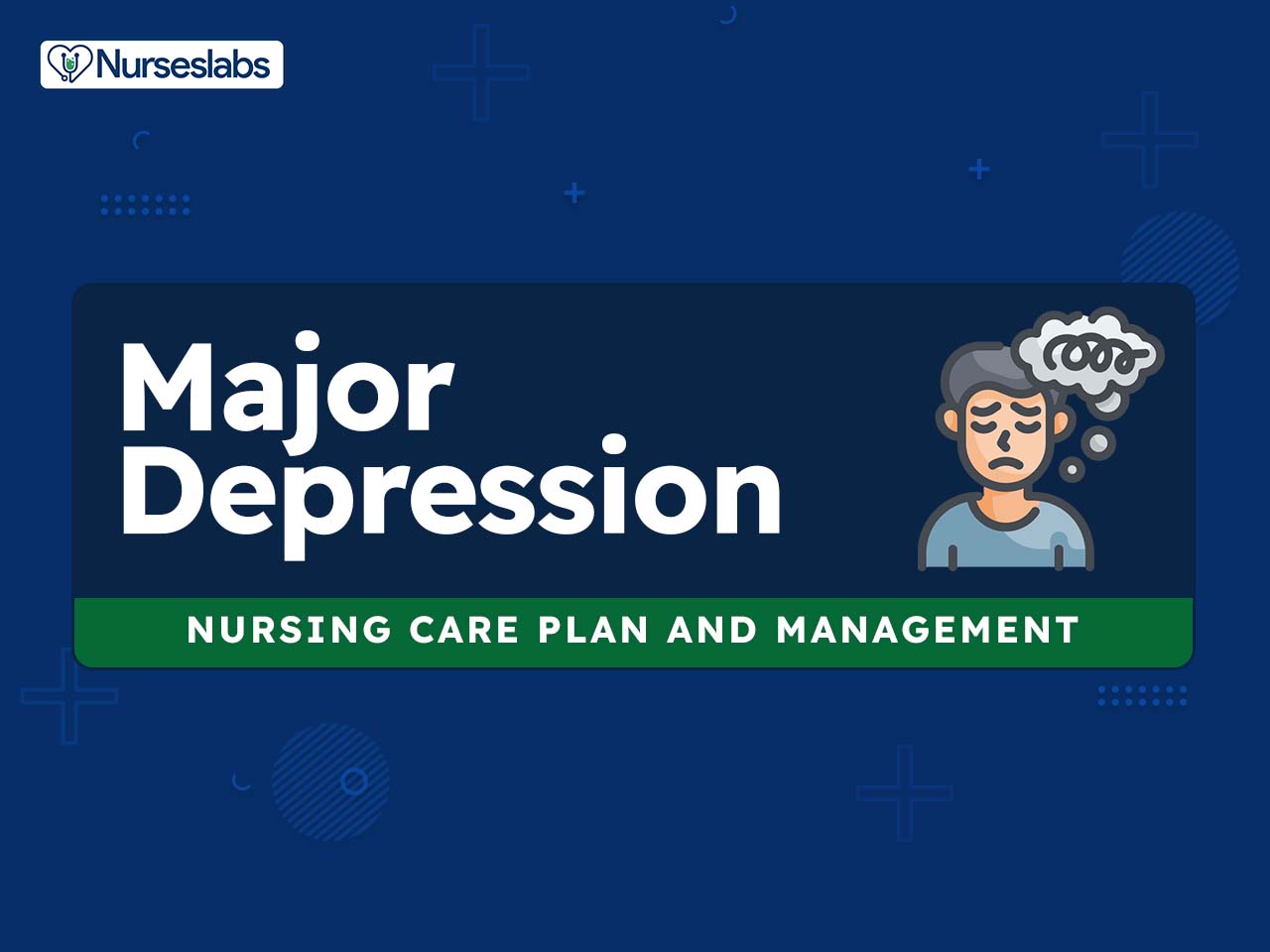

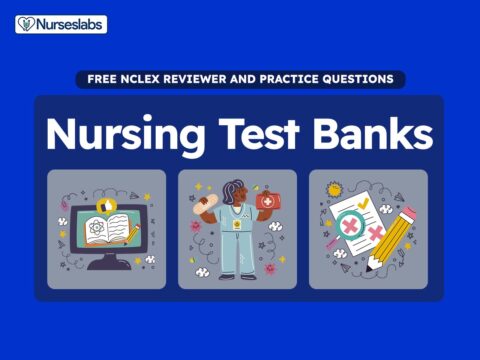






















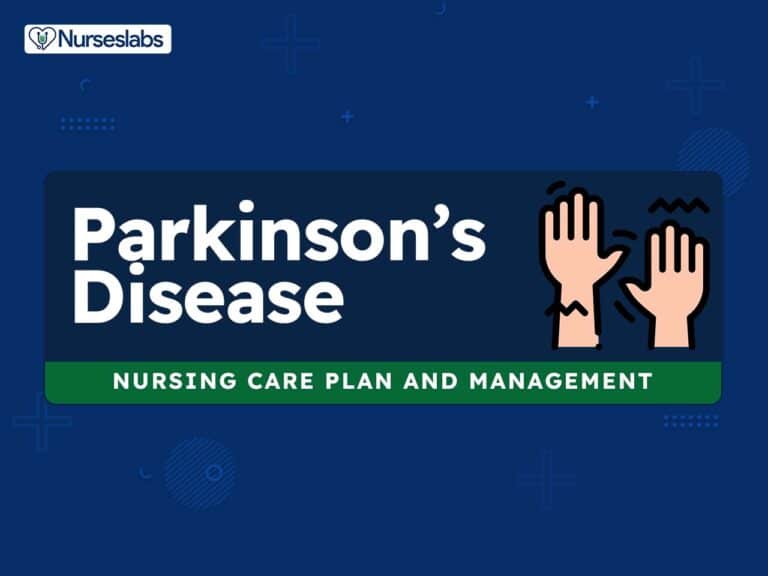
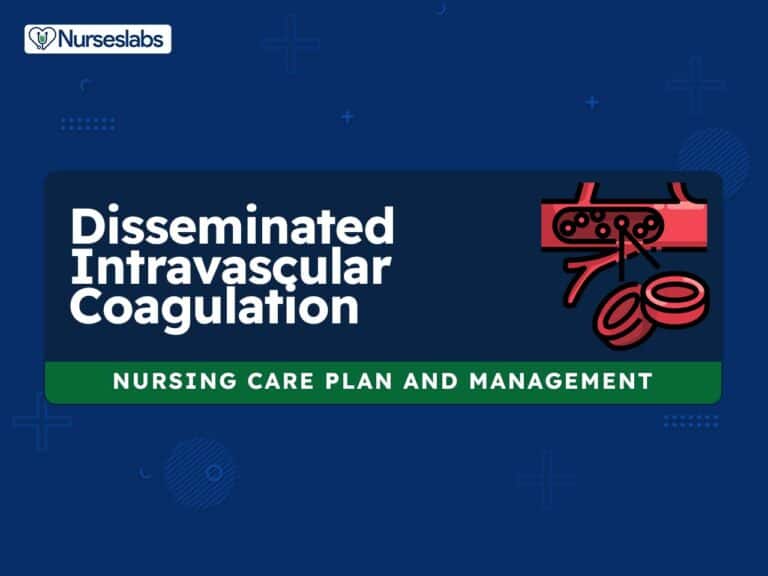
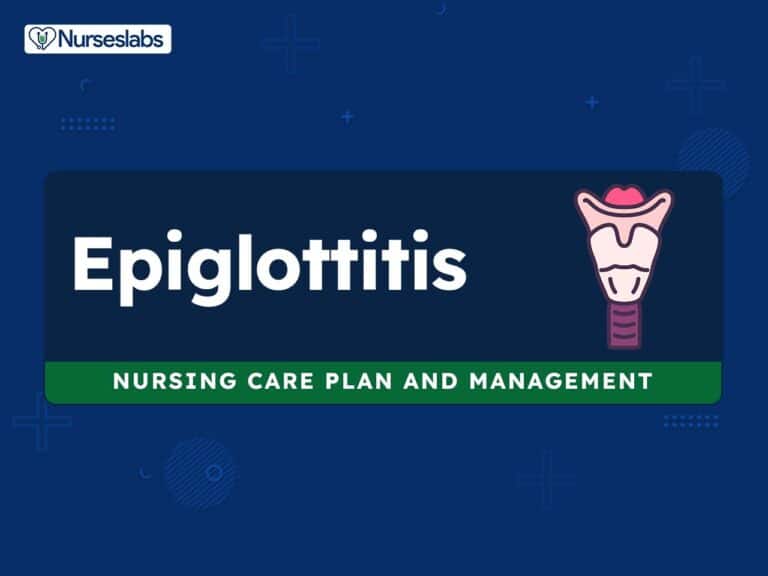

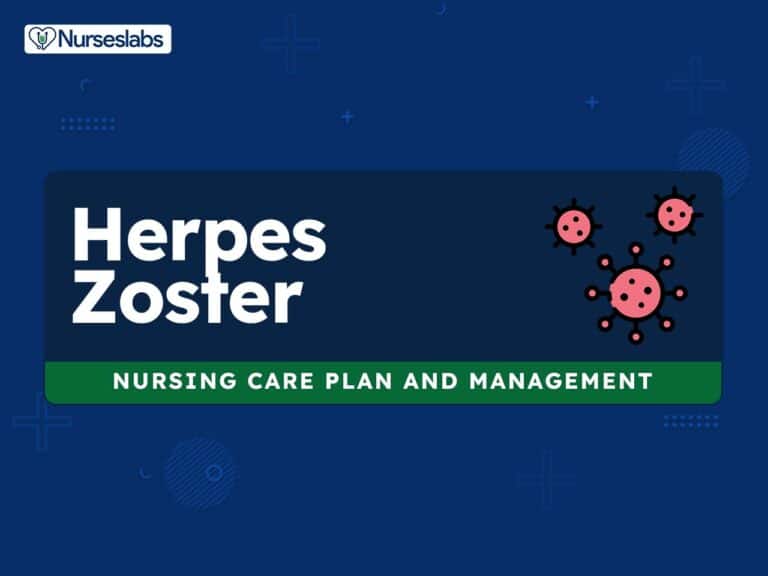

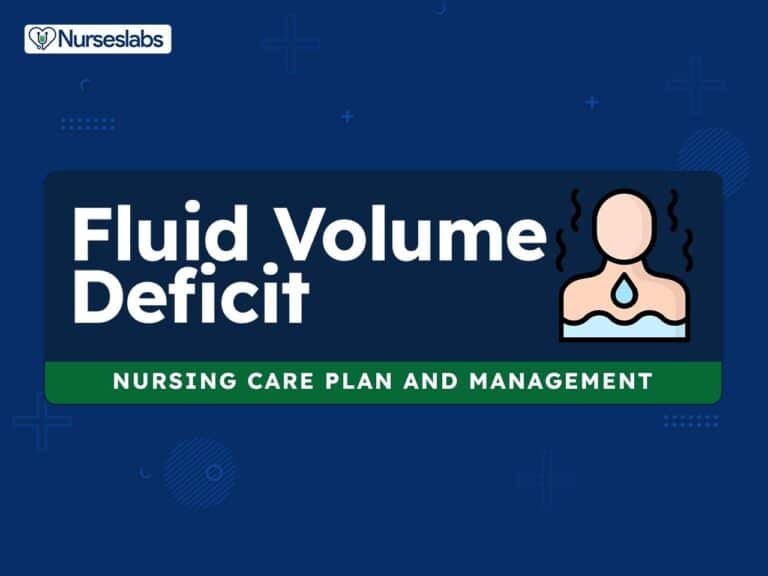
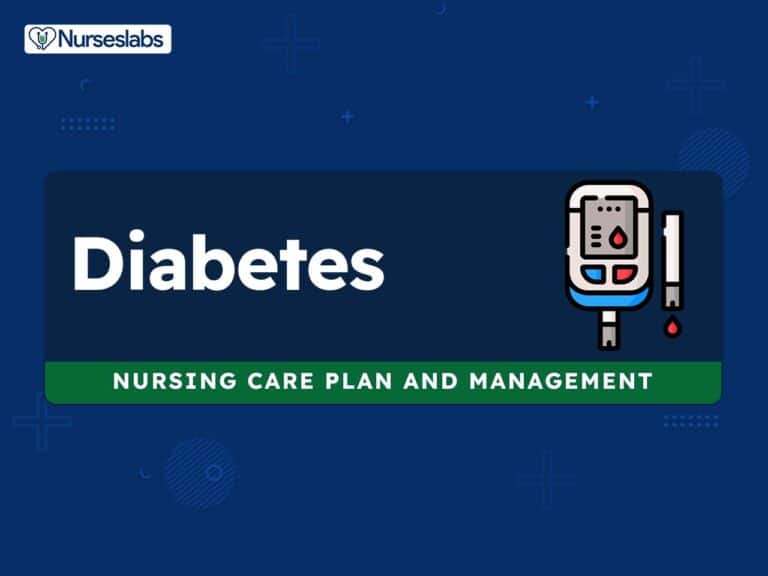
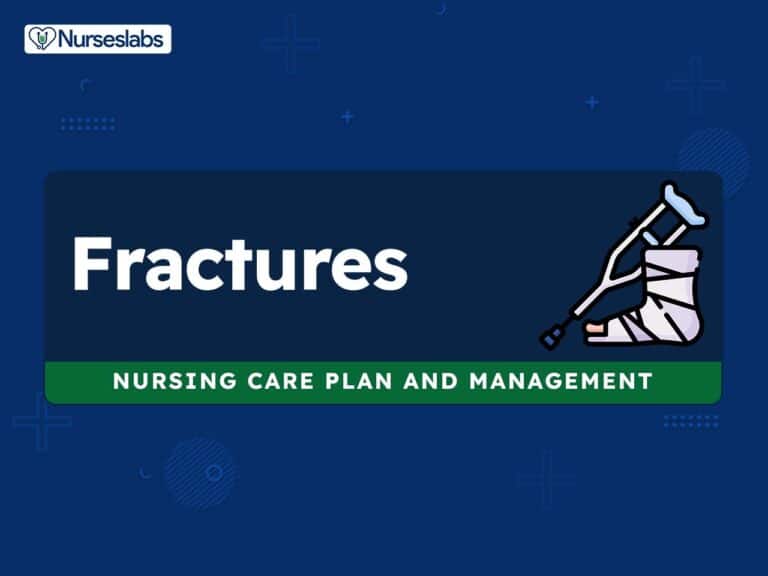
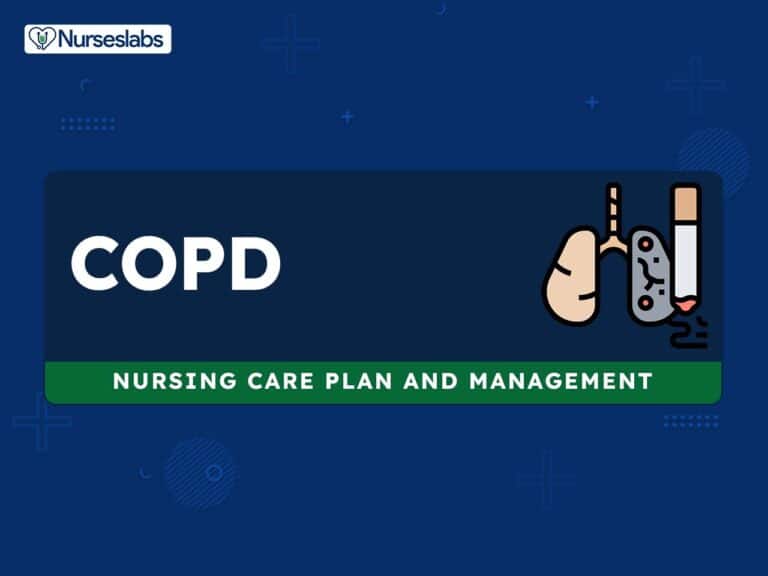

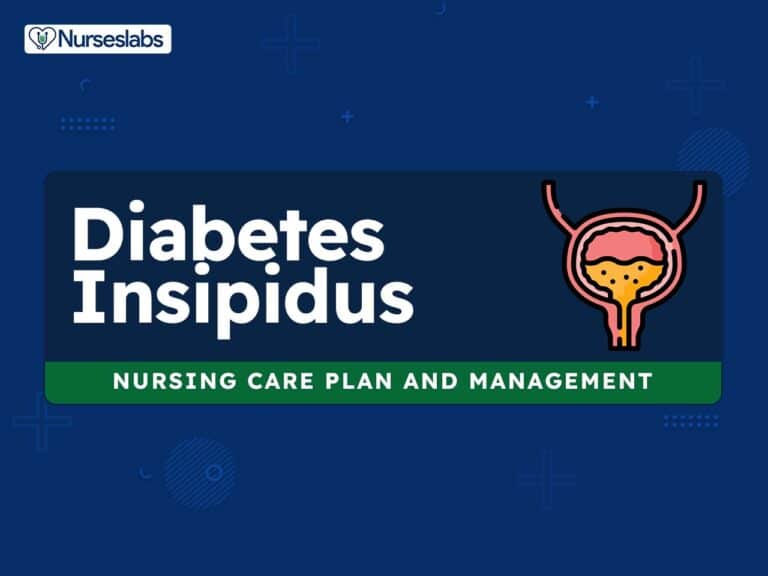
Leave a Comment